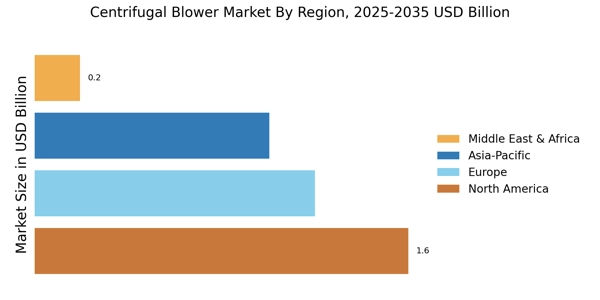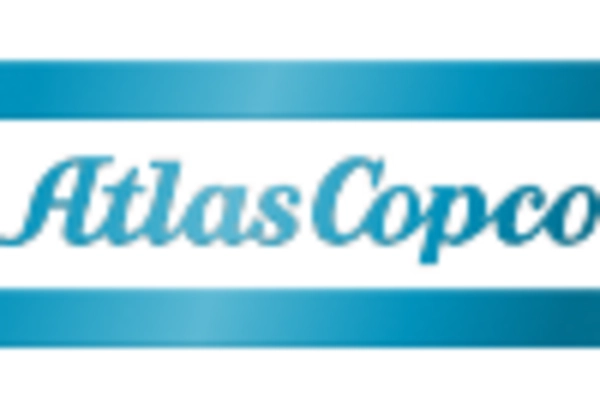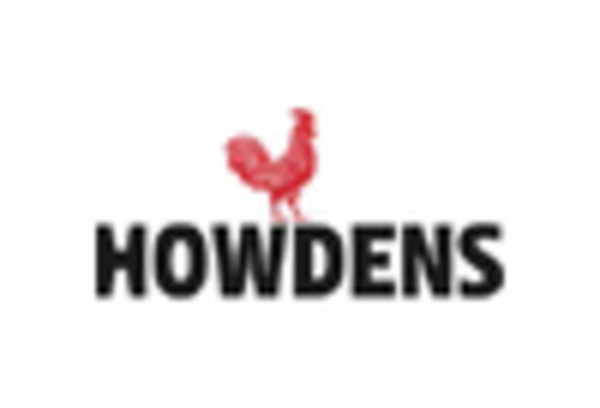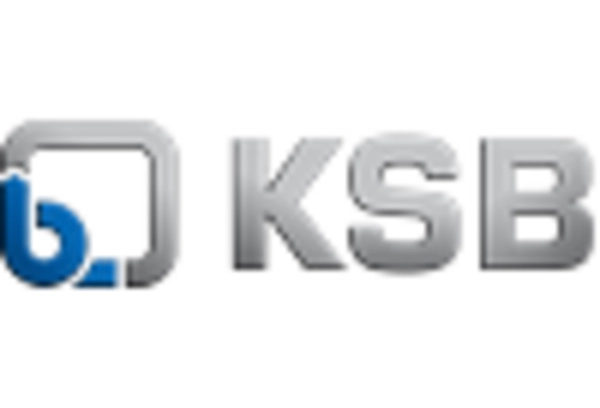Energy Efficiency Regulations
The Centrifugal Blower Market is significantly influenced by stringent energy efficiency regulations imposed by various governments. These regulations aim to reduce energy consumption and greenhouse gas emissions, compelling manufacturers to innovate and produce more energy-efficient blower systems. As a result, centrifugal blowers that meet or exceed these standards are increasingly favored in the market. The implementation of energy-efficient technologies not only helps in compliance with regulations but also offers cost savings to end-users through reduced operational expenses. This trend is expected to drive the market as companies seek to align with sustainability goals while maintaining productivity. The focus on energy efficiency is likely to shape product development and innovation within the centrifugal blower market.
Rising Environmental Concerns
The Centrifugal Blower Market is increasingly shaped by rising environmental concerns and the push for sustainable practices. As industries face pressure to minimize their environmental footprint, the demand for eco-friendly blower solutions is growing. Manufacturers are responding by developing centrifugal blowers that utilize sustainable materials and energy-efficient technologies. This shift not only addresses regulatory requirements but also aligns with consumer preferences for environmentally responsible products. The market is likely to see a rise in the adoption of handheld blowers that contribute to reduced emissions and lower energy consumption, reflecting a broader trend towards sustainability in industrial operations. This focus on environmental stewardship is expected to drive innovation and growth within the centrifugal blower market.
Growth in the Construction Sector
The Centrifugal Blower Market is poised for growth, largely due to the expansion of the construction sector. As urbanization accelerates, the demand for effective ventilation systems in commercial and residential buildings is on the rise. Centrifugal blowers are integral to ensuring proper air circulation and maintaining indoor air quality, which is increasingly recognized as a critical factor in building design. The construction industry is projected to grow at a steady pace, with investments in infrastructure and housing developments driving the need for reliable ventilation solutions. This growth is expected to create substantial opportunities for centrifugal blower manufacturers, as they cater to the evolving needs of the construction sector.
Technological Innovations in Blower Design
The Centrifugal Blower Market is witnessing a wave of technological innovations that enhance blower performance and efficiency. Advances in design, such as the incorporation of computational fluid dynamics (CFD) in the development process, allow for optimized airflow and reduced energy consumption. Additionally, the integration of smart technologies, such as IoT capabilities, enables real-time monitoring and predictive maintenance, which can significantly extend the lifespan of blowers. These innovations not only improve operational efficiency but also provide users with valuable data for better decision-making. As manufacturers continue to invest in research and development, the centrifugal blower market is likely to benefit from these advancements, leading to increased adoption across various sectors.
Increasing Demand in Industrial Applications
The Centrifugal Blower Market is experiencing a notable surge in demand driven by various industrial applications. Industries such as manufacturing, wastewater treatment, and HVAC systems are increasingly relying on centrifugal blowers for efficient air movement and ventilation. The market is projected to grow at a compound annual growth rate (CAGR) of approximately 5% over the next few years, reflecting the essential role these blowers play in enhancing operational efficiency. As industries expand and modernize, the need for reliable and high-performance blowers becomes paramount, thereby propelling the growth of the centrifugal blower market. Furthermore, the integration of advanced materials and designs in blower technology is likely to enhance performance, making them more appealing to industrial users.


















Leave a Comment